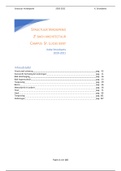Samenvatting
Summary Financial Accounting ALL CHAPTERS
- Instelling
- Karel De Grote-Hogeschool (KdG)
This summary is of all chapters from the book of financial accounting. I spent a lot of hours on this so it is pretty good if I say so myself!
[Meer zien]








